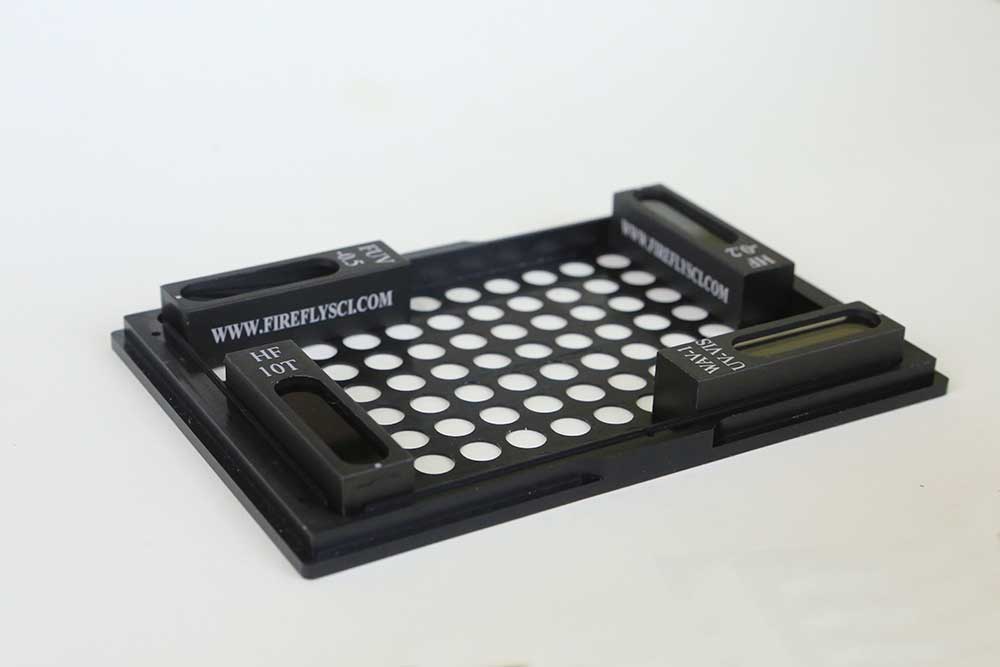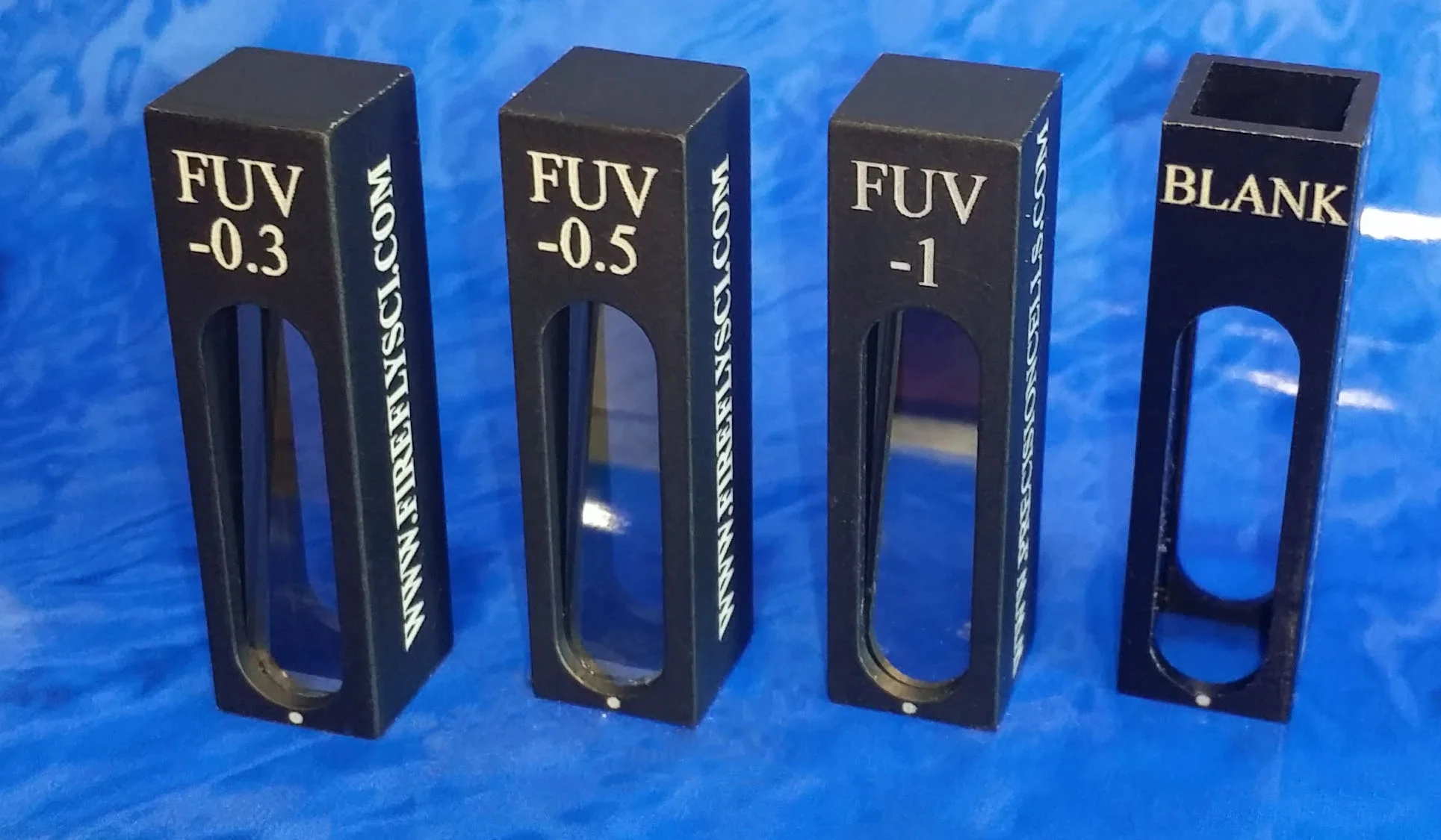FireflySci 96well plate adaptor and 96 well Calibration Plates
/FireflySci Adaptor Plate
FireflySci 96well plate adaptor and 96 well Calibration Plates
Hello everybody!
We are back with some exciting information on calibrating well plate readers. Just like spectrophotometers, 96well plate readers have complex optical systems that require maintenance and periodic calibration to make sure the machine is operating within spec.
In this article, we’ll cover the different types of 96 well calibration plates that we have available and how to easily convert your current spectrophotometer calibration standards into powerful microplate reader standards.
So, let’s go!
First, let’s talk about Microplate readers, aka plate readers. These machines can test assays for a variety of useful applications. The main 3 that we’ll focus on here is absorbance, luminescence and fluorescence.
One of the biggest benefits of using a plate reader machine is that you can run multiple samples in rapid succession. 96well plate readers use a special type of microplate to hold the samples. The microplates range in well sizes from 6 wells up to 384 wells and sometimes even higher.
96Well Plate Absorbance
Plate readers are very similar to spectrophotometers when measuring absorbance. A specific wavelength is chosen, light is transmitted through the sample and then it arrives at the machine’s detector. The difference between the two is that a plate reader has a light source, which comes from below the sample. In a spectrophotometer, the sample is held in a cuvette and the light comes in from the side of the cuvette. Cuvettes have a standard lightpath of 10 mm, but 96well plates do not have a set lightpath.
We can write a whole article on how these two machines are different but for calibration purposes they are very much the same.
Plate adaptor with NIST calibration standards
For absorbance calibration of a plate reader, you can use any of our HF, FUV or SPB filters to test absorbance. To convert these standards into a format that a plate reader can use, we’ve developed a special adaptor plate. This adaptor plate can hold up to 8 calibration standards so you can customize this plate to your liking and according to your machine’s guidelines. Then you simple set your microplate reader to scan the appropriate wells and you’re all set to go.
We also have pre-assembled plates that can measure the following:
- Absorbance accuracy in VIS
- Absorbance accuracy in UV and VIS
- Absorbance and Wavelength accuracy in UV and VIS
- Fluorescence accuracy (see below)
flourescence calibration 96well plate
96Well Plate Fluorescence
Measuring fluorescence accuracy can be tricky. Whether we’re talking about a spectrophotometer or fluorescence plate reader you’ll need special calibration standards for these machines. The good news is that you can use the same calibration standards for both machines. So if you have both in your lab, you only need to buy one set of standards to calibrate the both of them! How cool is that?!
Now onto the calibration method.
Fluorescence calibration requires custom-made polymer blocks. These polymer blocks have all sides polished and no exterior housing. The reason for this is that, for a fluorometer, the light goes into the front of the block and out the side at a 90 degree angle.
Now for a plate reader, the light is not able to exit the blocks at a 90 degree angle. What happens is that light is transmitted into the fluorescent blocks, then goes into a mirror and is bounced back down into the block again. After this second bounce the light is then sent to the detector to analyze the excitation.
The fluorescence blocks come in different materials and each material measures excitation at a different wavelength. Here are the materials from our fluorescence plate.
- Napthalene (Excitation Wavelength 290nm, Emission Wavelength 330nm)
- p-Terphenyl (Excitation Wavelength 295nm, Emission Wavelength 338nm)
- Ovalene (Excitation Wavelength 342nm, Emission Wavelength 482nm)
- Tetraphenylbutadiene (Excitation Wavelength 348nm, Emission Wavelength 422nm)
- Compound 610 (Excitation Wavelength 440nm, Emission Wavelength 475nm)
- Rhodamine (Excitation Wavelength 562nm, Emission Wavelength 573nm)
96Well Plate Luminescence
This is amazing and exciting. Our genius calibration engineering team has come up with a plate that can test luminescence inside a plate reader. This plate does not use toxic or radioactive materials that other companies offer, but our luminescence plate has a dedicated light source built into the plate.
Now this technology is brand spanking new and we are still working out all the bugs, but once this plate is ready it will be a safe and reliable way to calibrate your plate reader for luminescence accuracy.
For any questions about calibrating your 96well plate reader, please send us an e-mail at info@fireflysci.com.
Here’s to your plate reader success!
The FireflySci Team
![firefly_logo_FINAL [Black].jpg](https://images.squarespace-cdn.com/content/v1/5411d5c0e4b02e1c8b27565a/1434491508803-XB4OF7YDY46Z72L5U5AP/firefly_logo_FINAL+%5BBlack%5D.jpg)








